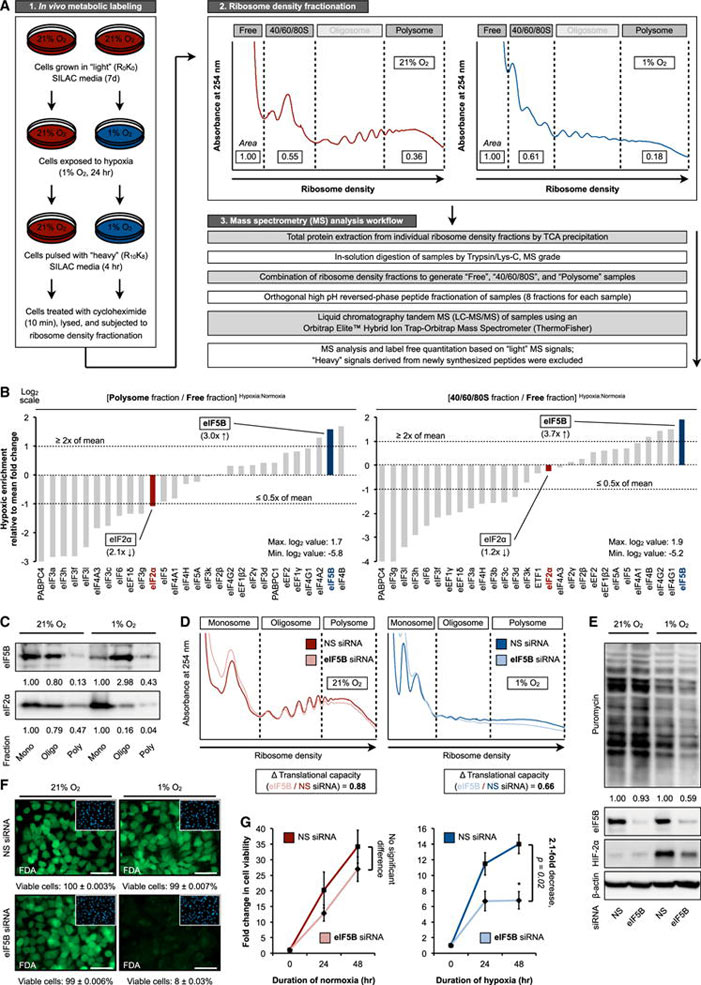Author: J.J. David Ho et al.
Date: January 2018
Oxygen-Sensitive Remodeling of Central Carbon Metabolism by Archaic eIF5B
eIF5B is a GTPase eukaryotic translation initiation factor found on ribosomes which positions the initiation methionine tRNA on start codons of respective mRNA to ensure translation accurately initiates. It is speculated that aerobic eukarya retained eIF5B to remodel anaerobic pathways during episodes of oxygen deficiency.
The authors developed a method with the capability to generate an architectural blueprint of biologically active cellular translational machineries, termed MATRIX. This method combines metabolic pulse labeling, ribosome density fractionation and high-throughput mass spectrometry. MATRIX was employed to compare the protein abundance in polysome fractions (active translation) to that of free fractions (translationally disengaged) in both normoxic and hypoxic cells, ultimately proving that eIF5B concentrates in hypoxic translating ribosomes.
Additionally, global translatome studies were employed to analyze ribosome density and eIF5B-dependant translatome remodeling in normoxic and hypoxic cells. In normoxic eIF5B-depleted cells, cell growth and viability were only modestly suppressed while hypoxic cell viability was significantly decreased following eIF5B silencing, proving that eIF5B is critical to the survival of cells in hypoxic environments.
All proteins can be separated into three classes based on their response to hypoxic environments. Compared to class I (translationally down regulated by hypoxia) and class II (translation unaffected by oxygen levels), class III proteins utilize eIF4FH-dependant cellular mRNA pathways, resulting in translational enhancement under hypoxic conditions. The authors studied the protein output from eIF5B-depleted cells from all three classes and found that all were significantly impacted, providing evidence that eIF5B was essential for hypoxic protein synthesis. Further, it was observed that most eIF5B-dependant proteins were class three members, highlighting the significance of eIF5B in adaptive hypoxic translatome reprogramming.
All of the various experiments conducted and presented in this study compared cellular functions under both normoxic and hypoxic conditions. As a result, a reliable and accurate means of generating and sustaining a hypoxic environment was required. The authors used a humidified H35 HypOxystation to subject all cells to a 1% O2, 5% CO2, 37 C, N2-balanced environment.
